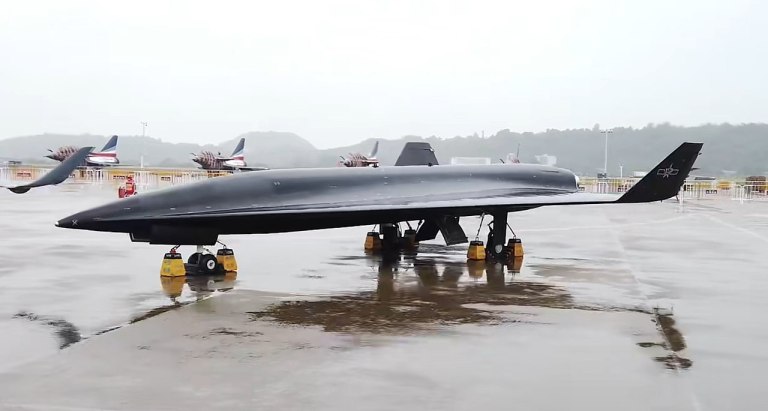
China’s new supersonic reconnaissance drone may be a harbinger of pre-emptive strikes against the US, Japan and Taiwan. Moreover, it may test the reactions and defenses of regional states against airspace incursions.
This month, The Washington Post reported that China could soon deploy a new type to help target Taiwan and US military assets in the Pacific.
The source cites leaked US National Geospatial-Intelligence Agency documents from last August showing satellite imagery of two WZ-8 rocket-powered supersonic drones at Liuan Airfield, located 560 kilometers inland from Shanghai.
It says the drones are a cutting-edge reconnaissance system that could gather real-time mapping data to inform strategy or determine targets for missile strikes in a future conflict.
The leaked documents obtained by The Washington Post show projected flight paths for WZ-8 reconnaissance missions. In addition, its electro-optical cameras and other sensors could gather intelligence while flying in Taiwanese and South Korean airspace.
Although the WZ-8 is unarmed, the Post says it could be modified for strikes in the future, as it is difficult to detect and intercept. It says an H6-M bomber launches the WZ-8 from China’s east coast, which could fly at an altitude of 30,000 meters and three times the speed of sound into South Korean and Taiwanese airspace.
The Post says China introduced the WZ-8 drone in 2019 during celebrations of the 70th anniversary of the founding of People’s Republic of China. Still, only a few analysts thought the drones were operational then.
The WZ-8 may provide capabilities that existing strategic reconnaissance drones need to improve. For example, improvements in counter-satellite capabilities and air defenses highlighted the need for a supersonic high-speed intelligence-gathering platform to enter and exit heavily defended airspace, which can be hazardous even to the stealthiest drones.
Last April, Asia Times noted US and allied counter-space capabilities such as ground-based mobile lasers, radiofrequency jammers, microwave weapons, and hunter-killer satellites that can threaten China’s surveillance and targeting satellites.
In addition, Asia Times reported on the US Long-Range Discrimination Radar last August, which can potentially discriminate between China’s military and commercial satellites.
China has a comprehensive doctrine regarding the use of drones for reconnaissance purposes. As noted in the December 2021 issue of Red Diamond, a US Army Training and Doctrine Command (TRADOC) publication, deep reconnaissance involves exploring areas beyond a given unit’s organic weapons systems.
It also notes that China’s deep reconnaissance operations involve a combination of long-range, high-endurance drones, such as the WZ-8 and other models.
The source says the People’s Liberation Army–Ground Force (PLA-GF) has adopted drones to spot long-range artillery, with fire direction, targeting, and forward observation, with drones being a significant area of its investment.
It also notes that China’s integration of sensors and shooters is agile, redundant, and reliable, given its considerable emphasis on battlefield surveillance and targeting capabilities.
For the PLA’s other branches, Kartik Bommakanti, in a report this month for the Observer Research Foundation, the introduction of drones and artificial intelligence (AI) has played a crucial role in modernizing the PLA Air Force (PLA-AF) and PLA Rocket Force (PLA-RF), showing an emphasis in the quality of delivering warheads, rather than the warheads themselves.
Asia Times reported on China’s emerging hypersonic weapons triad in February, with ship- and air-launched YJ-21 “carrier killer” missiles alongside its DF-17 road-mobile hypersonic missile becoming formidable assets for conventional deterrence.
The YJ-21 relies on satellite guidance provided by the PLA Strategic Support Force (PLA-SSF) to hit US aircraft carriers, making it a strategic weapon, while the DF-17 was notably among the missiles fired by China in its show of force against Taiwan last August, demonstrating its capability to box in Taiwan with long-range precision fire.
Drones such as the WZ-8 can provide a backup targeting capability should China’s satellites be taken out of action by US and allied counter-space capabilities.
China’s WZ-8 supersonic drone and nascent hypersonic weapons triad may be critical elements of its emerging reconnaissance-strike complex.
Ian Easton notes in a 2014 report for the Project 2049 Institute that China’s reconnaissance-strike complex capabilities are intended to undermine US capabilities to project power into the Pacific during crisis or conflict or meet its security commitments to allies and coalition partners.
Easton says China’s conventional power, such as hypersonic missiles and guided artillery, holds strategic assets such as US aircraft carriers at risk, enables precision strikes against critical targets while minimizing collateral damage and munition expenditure, and threatens its neighbors to a far greater degree than traditional platform such as warships or fighter jets.
Also, drone reconnaissance missions over territorial waters suggest that China intentionally heightens the possibility of unintended incidents to extract concessions, as Easton says.
He also says the PLA’s reconnaissance capabilities enable intelligence-gathering operations to “prepare the battlefield.” In contrast, its strike capabilities are centered on offensive missile systems optimized for large pre-emptive attacks.

